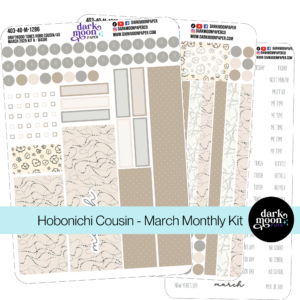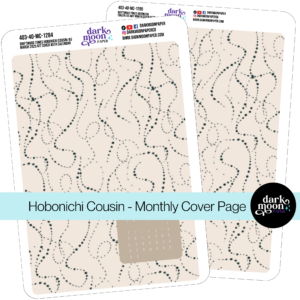Weekly schedule layouts help you stay organized while adding a personal touch. Whether you prefer simple designs or artistic elements, the key is balancing structure with creativity. Here’s a quick overview of ideas covered in this article:
The best planner is one you’ll stick with. Start simple, experiment with layouts, and find a style that keeps you organized and motivated.
Themed layouts bring a balance of style and practicality to your weekly planning, offering ways to make your spreads more personal and visually appealing. Here are three ideas to explore:
Once you’re comfortable with these styles, you can experiment with blending structure and creativity for layouts that are uniquely yours.
Hybrid layouts focus on blending different planning techniques to create a system that’s both functional and visually pleasing. Here are three approaches you can try:
Once your layout is ready, you can include habit trackers or other tools to easily monitor progress and stay on track.
"Integrating habits and trackers can help users develop healthier habits, monitor their emotional well-being, and achieve their goals, leading to improved overall well-being and a sense of accomplishment." [4]
These methods combine practicality with visual design, making habit tracking easier and more engaging. By weaving these tools into your weekly layout, you create a system that balances organization with personal growth – adding structure and creativity to your planning routine.
A well-designed weekly schedule strikes the right balance between keeping you on track and encouraging consistent planning habits.
As Hemlock & Oak explains, "The horizontal weekly layout allows for more flexibility and can work better if you don’t have a set schedule" [3]. This highlights how personal preference plays a key role in selecting the right planning approach.
To create your ideal weekly layout, try experimenting with different formats. Start simple, then gradually incorporate creative touches to make it both functional and enjoyable. Formats like Hobonichi Weeks or bullet journals can help you find one that suits your needs and style.
Planning isn’t just about staying organized – it’s also about expressing yourself. The best planners combine structure and creativity, adapting to your changing needs while reflecting your personality. With the right balance, your planner becomes more than a tool for scheduling – it becomes a source of inspiration and personal growth.
With so many layout options available, it can be tricky to decide which one fits your needs best.
The right layout depends on your planning style. Hourly layouts work well for those who need detailed schedules, while weekly layouts give a broader perspective. According to Hemlock & Oak, horizontal layouts are great for flexible planning without strict time slots [3]. On the other hand, vertical layouts are better for managing hour-by-hour tasks, making them ideal for detailed daily schedules.
A well-crafted weekly schedule balances big-picture planning with day-to-day details. Here are some key elements to include:
| Component | Purpose |
|---|---|
| Weekly Overview & Daily Tasks | Combine major commitments with three priority tasks per day |
| Time Blocks | Allocate specific slots for appointments and focused work |
| Optional Trackers | Keep track of daily habits or routines |
"Create mind maps for your goals, GameChanger, or ways to think positively. Mind mapping helps you gain clarity, break down your goals, and create tangible steps to achieve your goals" [5].
Set five weekly goals and focus on three priorities each day. This approach keeps you structured while allowing room for both planned and spontaneous activities.
Stickers Made for Planning
Our custom stickers are a fuss-free way to brighten up your planner pages with perfectly-sized designs that add a spark of personality to every layout.

Why use planner stickers?
Planner stickers make organizing easy, fun, and personal! Add color, creativity, and structure to every page, transforming your planner into a tool that reflects you. Perfect for tracking, decorating, and staying inspired daily!







Hello and welcome!
I’m Rachael Snow, a lifelong artist and entrepreneur, and I started Dark Moon Paper to blend my love of art, technology, and the mysterious beauty of the world around us. My sticker kits are meant to set the mood, tell a story, and give you a little escape from the ordinary.
I work from my cozy studio tucked away in the beautiful woods of Oregon, surrounded by nature and a dark night sky full of stars.